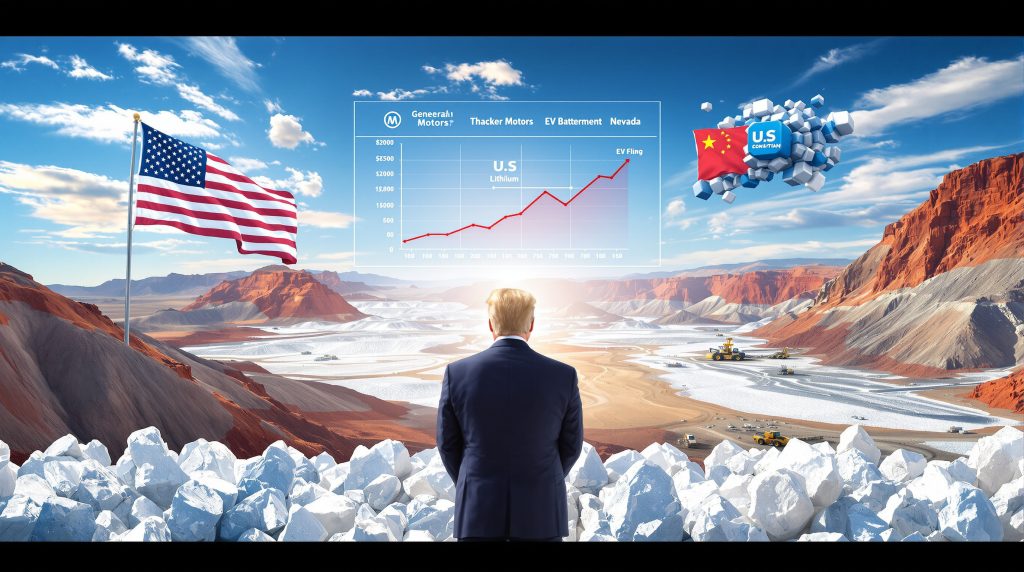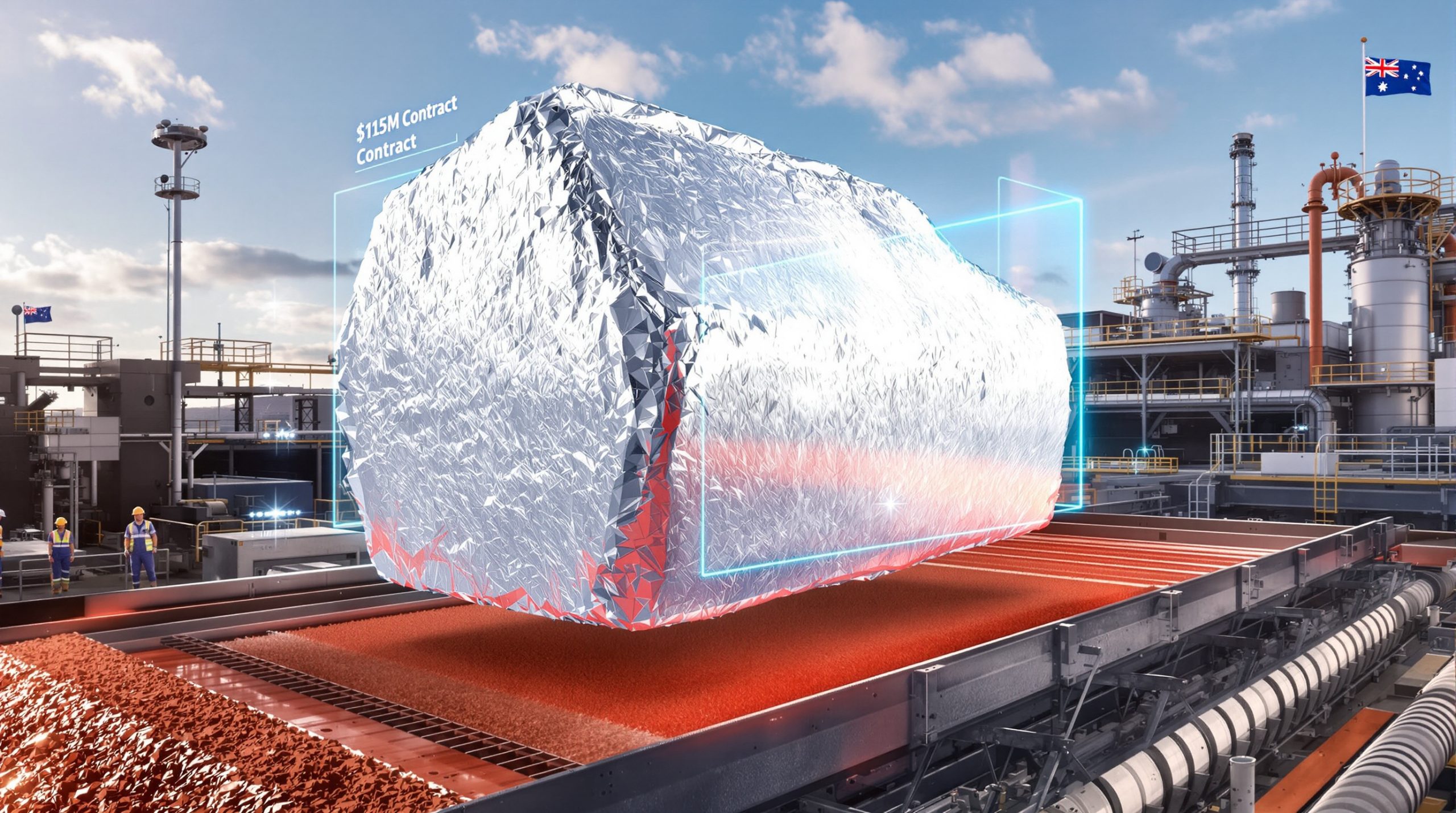US Government Strategic Investment in Lithium Americas: Understanding the 5% Stake Deal
The U.S. Department of Energy has finalized negotiations to acquire a 5% stake in Lithium Americas Corp (TSX: LAC) and a separate 5% stake in the company's Thacker Pass lithium mine joint venture with General Motors. This strategic investment represents a significant move in the administration's broader efforts to secure domestic supply chains for critical minerals essential to national security.
Shares of Vancouver-based Lithium Americas listed in New York rose 34% in after-hours trading following the announcement of the stake negotiations being finalized, demonstrating strong market confidence in this government-backed venture.
Key Investment Details
- Dual 5% stakes: One stake in the Lithium Americas corporate entity, and a separate stake in the GM joint venture
- Acquisition method: Through no-cost warrants that provide equity upside without immediate cash outlay
- Stock market impact: LAC shares rose 34% in after-hours trading when the stake negotiations were finalized
- Part of broader strategy: Follows similar investments in critical industries seen as vital to national security
This approach mirrors previous government investments in strategic industries, creating a pattern of public-private partnerships designed to strengthen America's position in critical minerals strategy supply chains.
Why Is the US Government Investing in Lithium Production?
Strategic Mineral Security Concerns
The investment comes amid growing concerns about China's dominance in the global lithium supply chain. According to the U.S. Geological Survey (2023), while China produces approximately 19,000 metric tons of lithium annually (making it the third-largest producer globally), its influence is far more significant in processing, where it handles over 75% of the world's lithium refining into battery-grade materials.
The International Energy Agency's Critical Minerals Market Review notes that lithium demand could increase by over 40 times by 2040 under their Net Zero Emissions scenario, making secure supply chains increasingly vital to national interests.
Reducing Foreign Dependency
| Global Lithium Production Comparison (2022) |
|---|
| Country |
| Australia |
| Chile |
| China |
| United States |
The U.S. currently produces less than 5,000 metric tons of lithium at a single Nevada facility owned by Albemarle. According to USGS Mineral Commodity Summaries (2023), this represents less than 1% of global production. The Thacker Pass project aims to dramatically increase domestic production capacity and reduce dependency on foreign supply chains.
BloombergNEF research indicates that securing domestic lithium supply chains could reduce battery costs by 10-15% through decreased transportation and processing dependencies, providing additional economic benefits beyond the national security considerations.
How Will the Thacker Pass Project Transform US Lithium Production?
Production Capacity and Timeline
Thacker Pass is positioned to become the Western Hemisphere's largest lithium source, with its first phase expected to produce 40,000 metric tons of battery-quality lithium carbonate annually—enough to supply batteries for up to 800,000 electric vehicles.
According to Lithium Americas' feasibility studies, the project site contains an estimated 13.7 million tons of lithium carbonate equivalent resources. This represents one of the largest lithium deposits in North America and could provide domestic supply for decades.
Unlike South American operations that primarily use brine evaporation techniques, Thacker Pass will utilize sulfuric acid leaching and conventional processing methods that involve crushing, heap leaching, and chemical precipitation to produce battery-grade lithium carbonate.
Strategic Partnership Structure
The project represents a complex partnership between:
- Lithium Americas: Primary developer and operator
- General Motors: Strategic investor with $625 million investment for 38% stake
- US Department of Energy: New 5% stakeholder with additional loan support
- Department of Energy: Renegotiating terms of a $2.26 billion government loan
This three-way partnership balances commercial interests with industrial end-user needs and national security objectives, creating a model that could be replicated for other critical mineral projects.
What Drove the Government's Equity Stake Decision?
Loan Renegotiation Dynamics
The equity stake request emerged during discussions about the $2.26 billion government loan's amortization schedule. During negotiations over loan terms, Lithium Americas offered the government no-cost warrants equivalent to 5-10% of its common shares to secure the first tranche of funding.
This negotiating approach demonstrates how critical the government financing is to the project's success, while also showing the company's willingness to provide equity upside in exchange for the loan's favorable terms.
Supply Chain Guarantees
Administration officials had initially sought assurances that GM would purchase the mine's lithium regardless of market conditions—a request that reportedly faced resistance from the automaker. This negotiation point appears to have influenced the government's decision to request equity stakes as an alternative form of security.
General Motors had already invested $625 million in the mine for a 38% stake, securing rights to purchase all of the project's lithium from its first phase and a portion from the second phase, with guaranteed supply for 20 years. This offtake agreement provides significant market security for the project.
How Does This Investment Fit into Broader US Critical Minerals Strategy?
Bipartisan Support for Domestic Production
The Thacker Pass project has received support across administrations as a crucial component of the U.S. strategy to boost domestic critical minerals production and reduce Chinese supply chain influence.
The Defense Production Act has been invoked for critical minerals, with Title III authorities providing funding for domestic rare earth and lithium processing capabilities. This legislation enables the government to prioritize and accelerate projects deemed essential to national security.
Part of Larger Investment Pattern
This investment follows a pattern of strategic government stakes in critical industries:
- Strategic mineral processing facilities: Investments in domestic processing capabilities for rare earth elements and battery materials
- Semiconductor production: Government investment to boost domestic chip manufacturing
- Lithium Americas: Latest strategic minerals investment focusing on battery supply chain security
Each of these investments addresses a specific vulnerability in America's industrial base, focusing on areas where overseas dependencies create strategic risks. The recent executive order on critical minerals further emphasizes this strategic shift toward domestic resource development.
What Are the Market Implications of This Government Stake?
Immediate Market Response
The market reacted positively to the announcement, with Lithium Americas shares listed in New York rising 34% in after-hours trading when the stake negotiations were finalized. This surge suggests investors view government backing as significantly de-risking the project.
For investors, government backing signals both the strategic importance of the project and increased confidence in its long-term viability, potentially attracting additional private capital to the domestic lithium sector.
Long-term Industry Impact
This government backing may:
- Signal stronger support for other domestic lithium projects in the permitting pipeline
- Encourage additional private investment in U.S. critical minerals
- Potentially accelerate permitting and development timelines for similarly strategic projects
- Create a model for public-private partnerships in strategic resource development
The investment could also influence global lithium markets by signaling a long-term U.S. commitment to building domestic supply chains, potentially influencing investment decisions in other countries.
How Will This Affect the GM-Lithium Americas Partnership?
Offtake Agreement Details
General Motors invested $625 million in the mine last year for a 38% stake, securing rights to purchase:
- All of the project's lithium from its first phase
- A portion of production from the second phase
- Guaranteed supply for 20 years
This arrangement provides GM with supply chain security for its expanding electric vehicle production, which could require lithium for hundreds of thousands of vehicles annually.
Three-Way Partnership Dynamics
The addition of the US government as a stakeholder creates a unique three-way partnership that balances:
- Commercial interests (Lithium Americas)
- Industrial end-user needs (General Motors)
- National security and economic policy objectives (US government)
This model could prove influential for future critical mineral projects, providing a framework that addresses both commercial viability and national strategic interests in a single venture.
What Challenges Remain for the Thacker Pass Project?
Despite the significant government backing, the project still faces several hurdles:
Development Timeline Considerations
- Construction phases: Multiple development stages planned with distinct milestones and funding requirements
- Regulatory approvals: Ongoing environmental permitting processes under NEPA guidelines
- Technical challenges: Scaling up production technology from pilot to commercial scale
- Water management: The project requires significant water resources in an arid region
The environmental permitting timeline has been a particular challenge for Thacker Pass. The project has undergone extensive environmental impact assessment under the National Environmental Policy Act (NEPA), including public comment periods and consultations with local stakeholders.
Environmental and Water Considerations
The project's water usage requirements have been carefully evaluated as part of the environmental impact assessment. The operation will require approximately 2,600 acre-feet of water annually, sourced from groundwater wells. Water management plans include recycling and conservation measures to minimize consumption.
Mitigation measures for environmental impacts include:
- Wildlife habitat protection programs
- Air quality monitoring and dust control
- Water quality monitoring
- Reclamation bonding to ensure site restoration
Market and Economic Factors
The project's success will ultimately depend on:
- Long-term lithium price stability in a historically volatile market
- Electric vehicle adoption rates in North America
- Competition from international producers in Australia, Chile, and China
- Technological developments in battery chemistry that could affect lithium demand
Global lithium prices have shown significant volatility, ranging from $17,000 to $80,000 per metric ton in 2022-2023 depending on grade and contract terms. This price volatility represents a risk factor for the project's economics.
FAQ: US Government Investment in Lithium Americas
Why is lithium considered a critical mineral for the United States?
Lithium is essential for electric vehicle batteries, energy storage systems, and various defense applications. Domestic production reduces dependency on foreign suppliers and strengthens national security. The IEA projects that lithium demand could increase by over 40 times by 2040 in a net-zero emissions scenario, making secure supply chains increasingly vital.
How does this investment compare to other government mineral security initiatives?
This investment represents one of the most direct government interventions in critical mineral production, similar in approach to recent stakes in other strategic minerals and semiconductor manufacturing. The use of equity stakes rather than just loans demonstrates an evolution in the government's approach to securing supply chains.
Will this investment speed up production at Thacker Pass?
While government backing may streamline some regulatory processes, the technical aspects of mine development will still require significant time. However, the financial security provided by government involvement may allow for more aggressive development timelines and reduce financing risks that often delay mining projects.
How might this affect lithium prices in North America?
Increased domestic production could eventually help stabilize North American lithium prices by reducing reliance on imports and creating more predictable supply chains for manufacturers. However, the global nature of lithium markets means that international factors will continue to influence pricing.
Environmental and Sustainability Considerations
Balancing Resource Development with Environmental Protection
The Thacker Pass project has implemented several innovative approaches to minimize its environmental footprint:
- Using co-generation facilities to produce electricity from waste heat
- Implementing water recycling systems that reduce freshwater consumption
- Designing a mine plan that minimizes surface disturbance
- Planning for progressive reclamation throughout the mine's life
These measures reflect the evolving standards for lithium mining, which increasingly must meet both economic and environmental goals. Recent lithium industry innovations have also focused on improving sustainability metrics across the sector.
Community Engagement and Social License
The project has engaged extensively with local communities, including:
- Public information sessions and comment periods
- Employment and training opportunities for local residents
- Partnerships with educational institutions for workforce development
- Consultation with tribal governments regarding cultural resources
This community engagement represents an essential aspect of modern mining development, recognizing that local support is critical to project success.
Future Outlook for US Lithium Production
Technology and Innovation Potential
Beyond the immediate production benefits, the Thacker Pass project could serve as an innovation hub for lithium processing technology. Domestic production creates opportunities for:
- Developing more efficient extraction methods
- Testing new purification techniques
- Training a specialized workforce in battery materials
- Building intellectual property in critical mineral processing
These technological advancements could position the U.S. as a leader in sustainable lithium production methods, creating competitive advantages beyond simple resource extraction.
Broader Supply Chain Integration
The government stake in Lithium Americas represents just one element of a comprehensive approach to building domestic battery supply chains. Full integration requires:
- Securing upstream mineral sources (mining)
- Developing midstream processing capabilities (refining)
- Supporting downstream manufacturing (battery production)
- Creating recycling infrastructure (circular economy)
The Thacker Pass investment addresses the crucial first step in this supply chain, providing the foundation for broader industry development. Recent changes in US mineral production policy have also created a more favorable environment for domestic resource development.
Through this strategic 5% stake in both Lithium Americas and its joint venture with GM, the US government has taken a significant step toward securing domestic lithium supply chains, demonstrating the critical importance of this resource to the nation's industrial future and energy transition. This investment aligns with the broader mining industry evolution toward greater integration with national strategic priorities.
Are You Looking to Invest in the Next Major Mineral Discovery?
Stay ahead of the market with real-time alerts on significant ASX mineral discoveries through Discovery Alert's proprietary Discovery IQ model, which transforms complex mineral data into actionable insights for investors. Understand why major mineral discoveries like those highlighted in this article can lead to significant market returns by exploring Discovery Alert's dedicated discoveries page.




